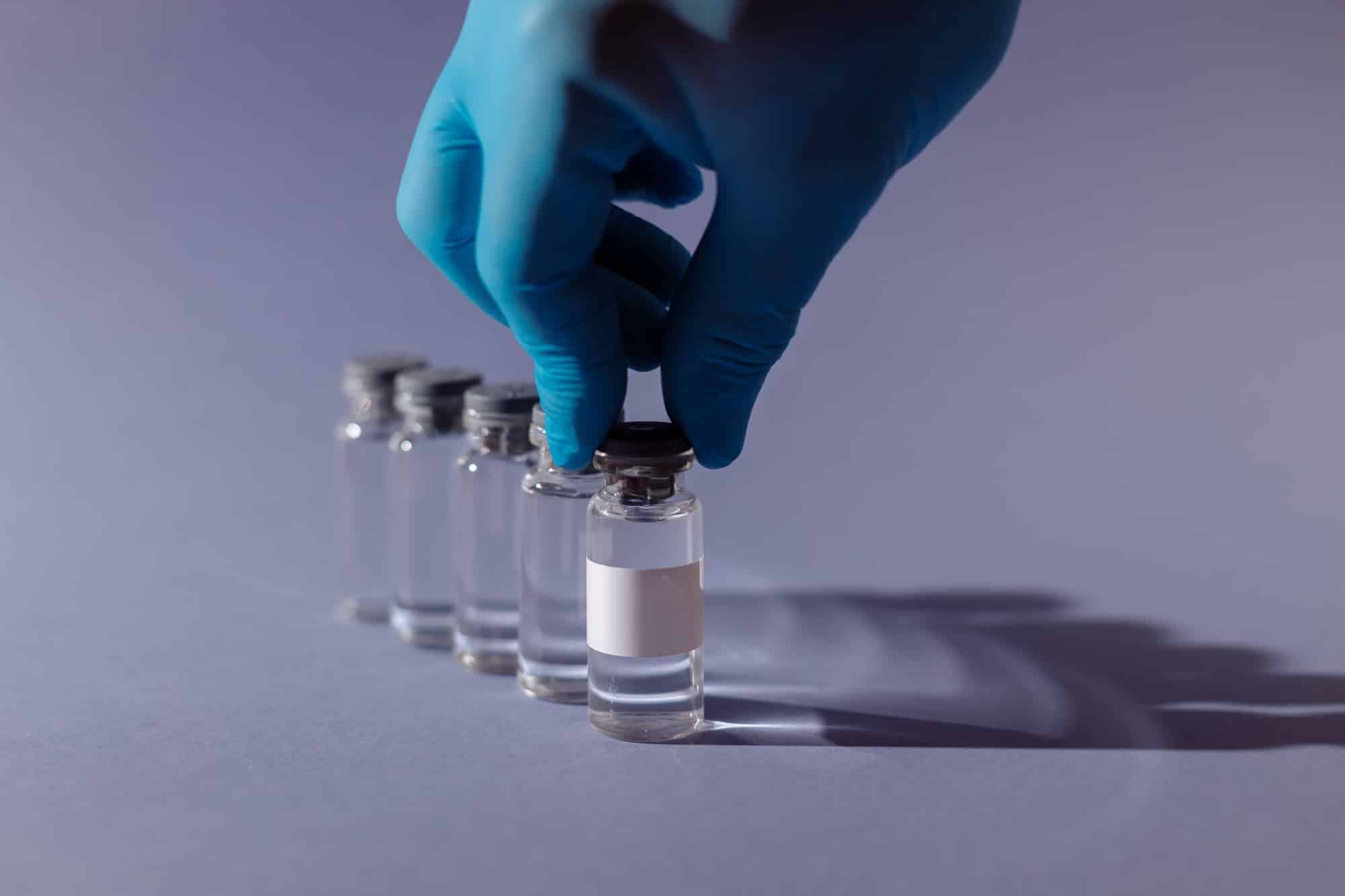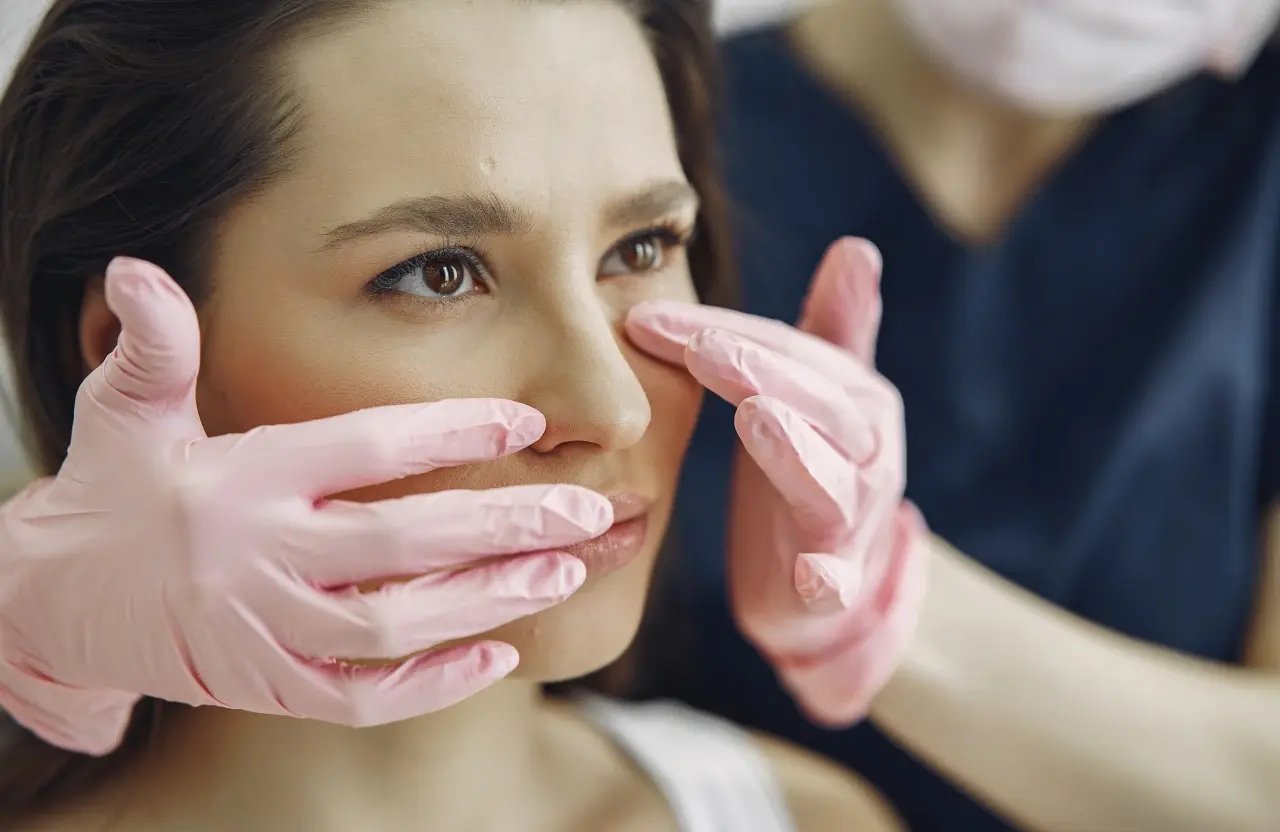Like any related medical procedure, botulinum therapy is performed according to product-specific indications, but not necessarily for the purpose of treating existing wrinkles. On occasion, doctors prescribe injections to be a preventive measure. This is especially common for individuals with strongly expressive faces, who wish to avoid wrinkles as much as possible as they age.
Does this mean they will keep a smooth face forever? No, mimic wrinkles will appear, but later than they normally would, and they will not be so deep. Therefore, such measures will significantly facilitate the work of a cosmetologist in five, ten, and fifteen years afterward.
How Does Preventative Botox Work?
Preventive Botox injections are used to retrain facial muscles and improve the “posture” of the face, which causes the appearance of wrinkles.
Neuromodulator helps affect certain muscles that stretch the skin. As a result, the skin and muscles recover faster from wrinkles caused by active movements, such as laughter and anger.
Experts usually recommend treating wrinkles in two stages: first, they recommend using retinol to boost collagen production and strengthen the skin. After that, they suggest incorporating a Botulinum toxin neuromodulator, such as Botox or other comparable neurotoxins, to further address wrinkles and fine lines. This approach can yield excellent results and effectively combat the signs of aging.
Most people delay seeking botulinum toxin injections until the wrinkles become more visible, but preventative treatment uses Botox to prevent wrinkles from appearing. You can effectively prevent the formation of wrinkles by injecting Botox into the muscles that typically cause wrinkles around the mouth, eyes, and eyebrows. This technique slows down these muscles, neutralizing the development of wrinkles (or at least dramatically slowing them down) before they even form.
Botox works by blocking nerve signals, causing muscles to contract. The injected muscle does not contract, and this causes the wrinkles to relax and soften.
Botox is an effective way to prevent the early formation of wrinkles by blocking the movement of facial muscles and practicing facial relaxation. This is applicable even after the product wears off, making it an indispensable tool for people of all ages.
Wrinkles form due to repetitive skin movements. By introducing neuromodulators early on, you can prevent them from appearing altogether, instead of trying to correct them after they’ve already formed. Think of it like a marathon: minor treatments and care over time will lead to more natural long-term results.
One of the most common places for prophylactic Botox injections is the forehead, between the eyebrows, and the crow’s feet zone. Preventive Botox can avert deep wrinkles that make the person look older and more tired, and are so difficult to treat.
How Many Units Are Needed for Preventative Botox?
You might think you would use less Botox than with an older patient just because of age, but you would be wrong. Regardless of age, the dosage depends on the muscle mass, the visibility of lines on the face, and how deep they are. In addition, the injection protocol is the same as for an older patient, and placing injections depends on the person’s muscles.
It is also vital to comply with the manufacturer’s instructions relating to particular areas of the face. However, the amount of product used should be based on the patient’s muscle mass.
It is crucial to remember that neurotoxins cannot be used to prevent other signs of aging, like dry skin, pigmentation, and vascular abnormalities. But preventative Botox injections can and should be used alongside a medical-grade skincare regime to prevent visible aging.
In addition, various non-invasive procedures can improve skin health and reduce the need for injections at an early age. For example, treatments like laser therapy and medical-grade facials can effectively enhance skin quality, tone, and texture, resulting in a more youthful appearance.
Incorporating these treatments into a regular skincare routine can help prevent the development of fine lines and wrinkles, while reducing the frequency of Botox injections. In addition, these non-surgical options can be combined with a healthy lifestyle to ensure long-term skin health and a more youthful-looking complexion.
It’s important to proceed cautiously when patients in their early twenties request Botox injections as a preventative measure. To ensure that their intentions are not the result of pressure from social media, or body dysmorphia, it’s crucial to carefully evaluate their motives.
Therefore, providing appropriate patient care and conducting a comprehensive consultation is essential to determine the best course of action for their individual needs.
Benefits of Preventative Botox
The benefit of Botox for wrinkle prevention is very noticeable. This treatment can save the person from developing deep wrinkles in the future or significantly slow down their progression. The best time to fight wrinkles is when they first appear.
Some dermatologists suggest treating Botox as another part of the beauty routine, along with sunscreen and moisturizers.
The benefit of preventative Botox is that it helps keep the muscles lean, which means you don’t need as much Botox as a person ages.
It is also important to note that Botox does not work for all wrinkles. If your patient has permanent or static wrinkles, Botox will not remove them. It’s never too late to start Botox, even if your client already has static wrinkles. Botox effectively softens existing wrinkles, prevents further deepening, and prevents new ones from appearing.
Finally, Botox is convenient and affordable. The appointment is brief, taking only 20 to 30 minutes, and the patient will see the final effect two weeks after the treatment. Most patients experience noticeable improvements within the first few days and continue to see positive changes throughout the two weeks.
Preventative Botox vs. Baby Botox
Preventative Botox is aimed at dynamic muscles for lines and wrinkles that have not yet formed but may form in the future. Such injections preserve the skin’s quality and “train” the muscles to become less active over time.
Baby Botox can create a subtle and rejuvenating effect. So what exactly does the term “baby Botox” mean? Simply put, this method involves injecting a minimal (about a quarter of the standard dose) amount of botulinum toxin to ensure minimal muscle movement.
By incorporating microdosing into your skin treatment regimen, you can effectively address the early onset of wrinkles and fine lines while maintaining a natural appearance. This also provides an affordable option for clients seeking to enhance their natural beauty. After all, the smaller the amount of the drug used, the lower the price of the procedure.
This treatment is perfect for individuals seeking a subtle enhancement of fine lines and wrinkles while still keeping the ability to make facial expressions with no hindrance.
When Is The Best Time To Start Botox?
Determining the ideal age to start receiving Botox injections for optimum results is a tricky area that most experts refrain from commenting on. Individual differences in physiology and other factors make it challenging to pinpoint a specific age that would apply to all patients.
We use our facial muscles in very different ways: some people use their forehead all the time, and by the time they’re in their 20s, they’ll have etched lines. Others rarely use their forehead and may have almost no forehead wrinkles when they are over 40. Genetics and general skin condition are also important.
The quality of the skin is also crucial – for example, UV rays and damage from smoking can significantly worsen wrinkles.
There is no particular age for starting Botox. Regardless of whether your patient is 25 or 35, the best time to start treatment is before the appearance of wrinkles on the resting face.
Conclusion
Preventative Botox is a popular cosmetic treatment that aims to delay the onset of wrinkles by targeting the underlying muscles that cause them.
The concept of using Botox as a preventative measure is still relatively new; many individuals are opting for this treatment to maintain a youthful appearance. While there are potential side effects, many patients consider preventative Botox benefits worth the risk.
FAQ
Can Botox really be preventative?
Can Botox prevent wrinkles? Yes, Botox can be used preventatively to slow down or stop the formation of wrinkles caused by repetitive muscle movements.
By temporarily relaxing the targeted muscles, Botox can prevent the deepening of wrinkles resulting from repeated facial expressions, such as frowning or squinting. They commonly use this preventative effect on the forehead, frown lines, and crow’s feet around the eyes.
However, it is essential to understand that the effectiveness of Botox preventative treatment can vary depending on factors like age, skin type, and the frequency and intensity of muscle movements.
Is preventative Botox different from regular Botox?
Preventative Botox is not different from regular Botox in terms of the substance used. In both cases, it is botulinum toxin type A. The difference lies in the treatment goal and the timing of the injections.
Preventative Botox aims to prevent wrinkles formation by injecting small amounts of Botox into particular muscles before they become overactive and create lines and wrinkles. It is typically administered to younger patients who do not yet have visible wrinkles but want to maintain a youthful appearance.
Regular Botox treats existing wrinkles and lines by relaxing the muscles that cause them. It is usually administered to older patients with already visible signs of aging.
What are the side effects of preventative Botox?
The side effects of prophylactic Botox are generally the same as regular Botox injections. These may include the following symptoms at the injection site:
- Temporary bruising;
- Swelling;
- Redness;
- Pain.
In rare cases, patients may experience drooping eyelids, dry eyes, or double vision.
Some people may also get headaches or flu-like symptoms after treatment, but these side effects are usually mild and temporary.
References
Small R. Botulinum toxin injection for facial wrinkles. Am Fam Physician. 2014 Aug 1;90(3):168-75. PMID: 25077722. https://pubmed.ncbi.nlm.nih.gov/25077722/.
Freeman M, Sayegh F, Sarosi A, et al. Millennials Are Interested in Botulinum Toxin Injections for Prevention of Facial Rhytids. FACE. 2021;2(1):94-98. doi:10.1177/2732501620984761.
Mobayed N, Nguyen JK, Jagdeo J. Minimally Invasive Facial Cosmetic Procedures for the Millennial Aesthetic Patient. J Drugs Dermatol. 2020 Jan 1;19(1):100-103. doi: 10.36849/ JDD.2020.4641. PMID: 32395973.
Pellizzari R, Rossetto O, Schiavo G, Montecucco C. Tetanus and botulinum neurotoxins: mechanism of action and therapeutic uses. Philos Trans R Soc Lond B Biol Sci. 1999;354(1381):259-268. https://doi.org/10.1098/rstb.1999.0377.
MEDICATION GUIDE BOTOX®. January 2016. Accessed January 6, 2020. https://www.fda.gov/media/77359/download.
Humphrey S. Neurotoxins: evidence for prevention. J Drugs Dermatol JDD. 2017;16(6):s87-s90. https://journals.sagepub.com/doi/full/10.1177/2732501620984761#body-ref-bibr12-2732501620984761.
Alam M, Tung R. Injection technique in neurotoxins and fillers: indications, products, and outcomes. J Am Acad Dermatol. 2018;79(3):423-435. https://doi.org/10.1016/j.jaad.2018.01.037.








